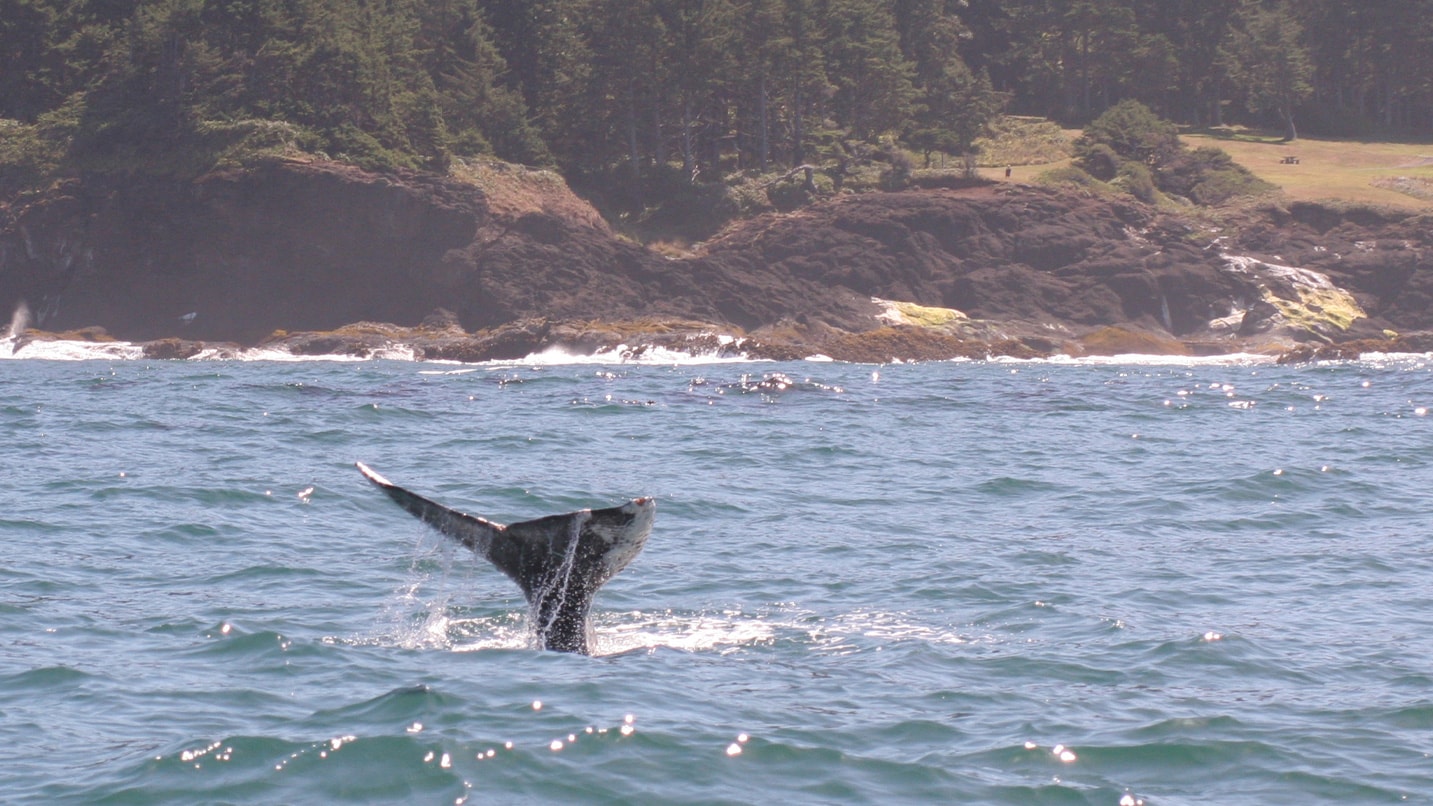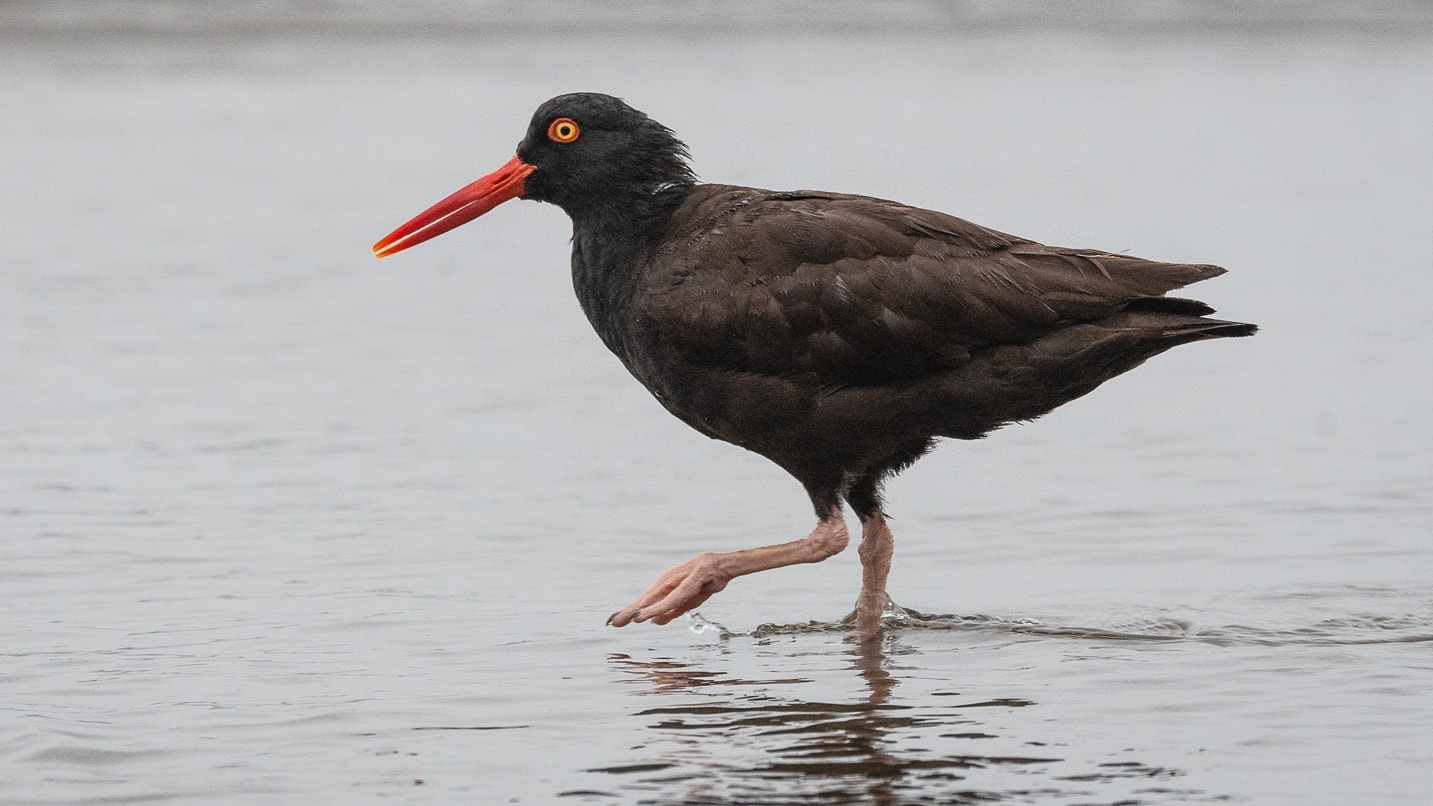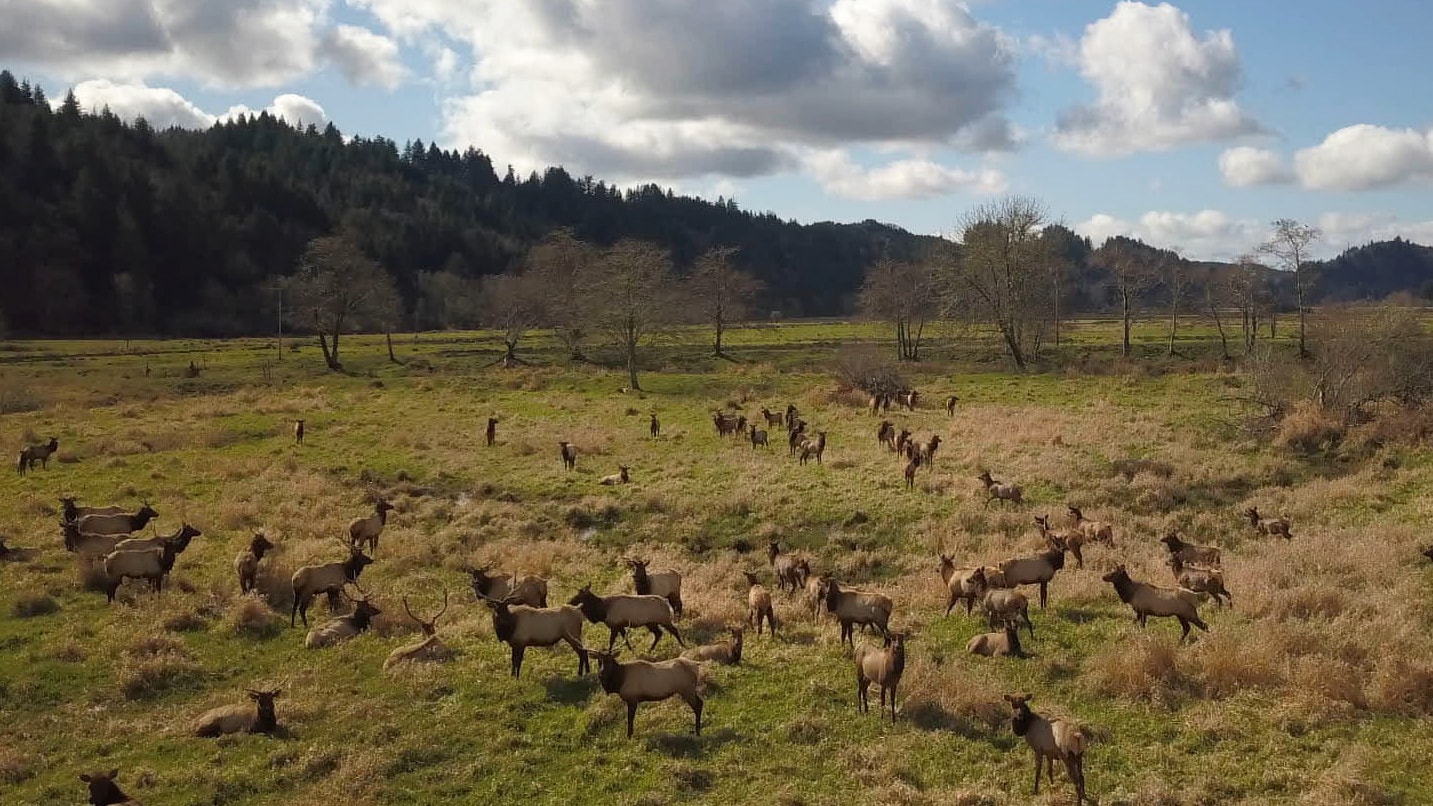There’s nothing so impressive as a powerful storm on the Oregon Coast in winter. But it takes more than ocean swells and a little wind to faze the birds and mammals that call the region home. Most don’t hibernate, which makes winter a great time for watching both wildlife and waves. Check out the Oregon Department of Fish & Wildlife’s wildlife viewing report to learn where the wild things are week by week.

Spy a Spouting Whale
Each year approximately 20,000 gray whales pass by Oregon on their way to and from the warm lagoons of Mexico. While late March is the peak of the northward migration, you can spot stragglers through June.
Gray whales can stay underwater for 30 minutes before coming to the surface for fresh air. Bide your time and watch for “spouts”: fountains of mist sprayed up to 13 feet into the air. (If you’re close enough, you may even hear them.) If you’re really lucky, you may witness a whale breaching, or leaping partway out of the water.
If you go, don’t forget to:
- Bring binoculars or a spotting scope.
- Choose calm days when there are fewer whitecaps to spot spouts more easily.
- Dress warmly, especially if you are whale watching in an exposed location.
- Never approach a marine mammal resting on the beach, and keep dogs leashed.
- Stay in designated viewing areas and never turn your back on the ocean in case of high swells or sneaker waves.

Explore Estuaries for Birds
With its haystack rocks, undeveloped beaches and several major river estuaries, the Oregon Coast abounds with winter birding opportunities. If you’re not sure where to start, check out the Oregon Coast Birding Trail. Divided into four sections, the trail offers detailed descriptions for 173 sites along the Coast, including what birds you are most likely to see through the seasons.
In winter, migrating waterfowl and shorebirds flock to coastal estuaries and lakes. One of the best places to view them is Tillamook Bay. Look for rafts of ducks, including mallards, American wigeons, northern pintails, surf scoters and bufflehead. At low tide, search the mudflats for sandpipers, dunlins and dowitchers.
Don’t forget Oregon’s winter . Species that frequent estuaries include osprey, bald eagles and merlin, while red-tailed and rough-legged hawks frequent fields and meadows. Yaquina Head Outstanding Natural Area is a good place to spy peregrine falcons hunting off the cliffs. While you’re there, look for black oystercatchers picking among the rocks with their distinctive orange-red bills and harbor seals lolling near the shore.
If you go, don’t forget to:
- Bring binoculars. A spotting scope is especially helpful when viewing waterbirds that are resting or feeding far from shore.
- Keep dogs leashed, as shorebirds are easily disturbed.
- Dress warmly, especially if you are watching birds from an exposed location.

Scout Meadows for Roosevelt Elk
Well-muscled Roosevelt elk, which range west of the Cascade Mountains, are the largest elk in North America. In winter elk herds abandon snowy hills for low meadows, where they’re easier to see. You may notice groups of females, or cows, with their offspring or spot “bachelor herds” composed of young bulls. Males shed their impressive racks of antlers in winter, but they start growing back in spring.
One great place to view elk on the Coast is Jewell Meadows Wildlife Area near Seaside, which was established in 1969 for the express purpose of providing high-quality habitat to native wildlife. The best time to view elk is November through April, when staff supplement their feed with hay. (Winter “elk feeding” tours are available, but they fill up fast — call 503-755-2264 to make a reservation.) While there, you may also spy waterfowl, raptors, owls and a variety of songbirds. Before you head out, go online and purchase an ODFW Wildlife Area parking permit, which can be used here and at 14 other wildlife areas around the state.
Dean Creek Elk Viewing Area off of Oregon Highway 38 near Reedsport is another reliable place to see elk. This series of meadows managed by the Bureau of Land Management is home to a resident population of elk that ranges from 60 to 100 animals. It’s not uncommon to spy dozens of elk from one of several viewing areas. Look for ducks and geese, river otters, beavers and coyotes, too.
If you go, don’t forget to:
- Use designated pullouts and viewing areas. Don’t park on the side of the highway.
- Never approach an elk.
- Bring binoculars or a spotting scope (and your camera).
This content was originally published here.









